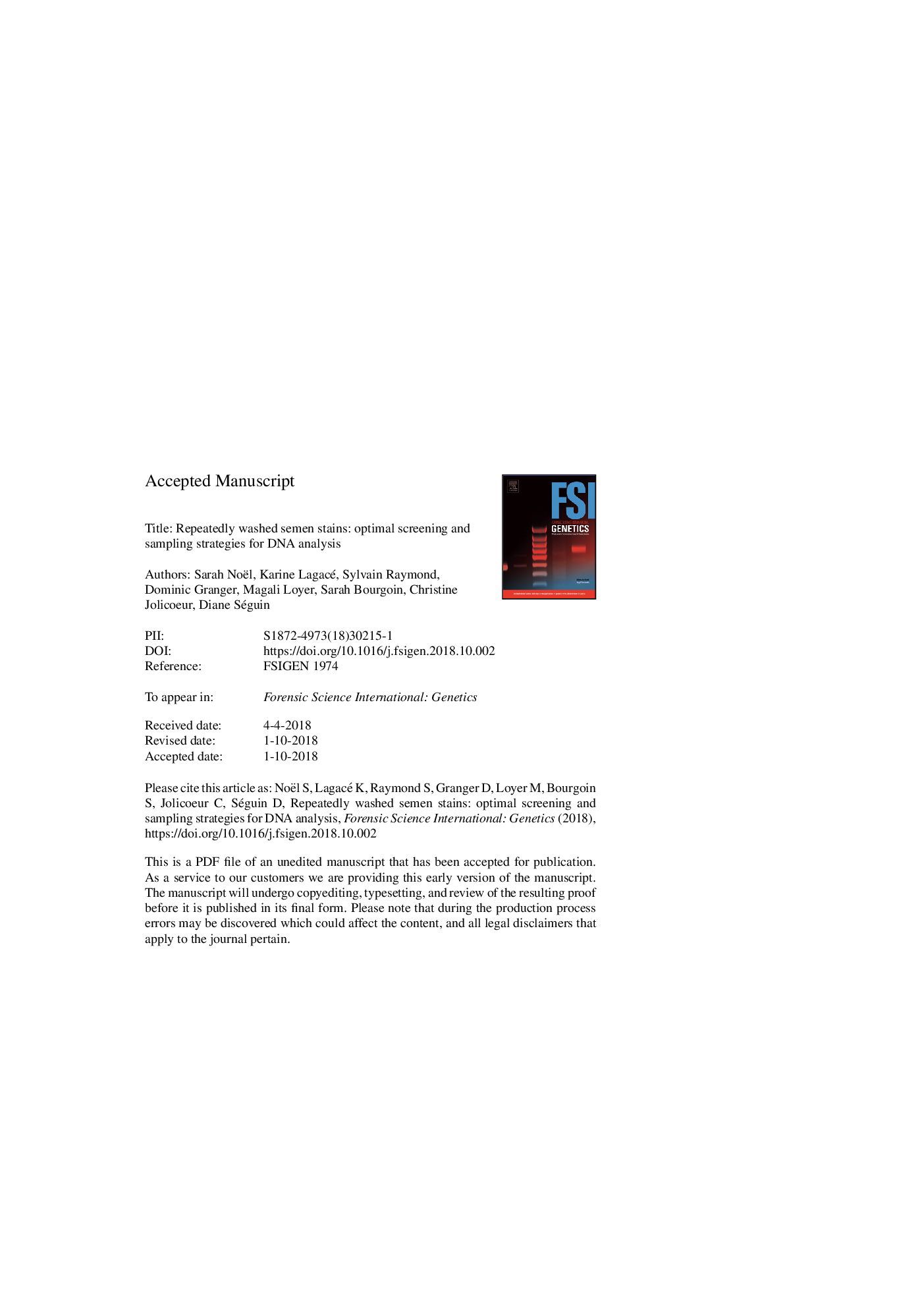| Article ID | Journal | Published Year | Pages | File Type |
|---|---|---|---|---|
| 11008122 | Forensic Science International: Genetics | 2019 | 21 Pages |
Abstract
In many sexual assault cases, bedding and clothing are essential pieces of evidence that are screened for semen stains to gather DNA from the assailant. In some cases, these items have been washed before being seized and sent to the forensic lab. However, few data exist on the optimal methods for detecting and sampling semen stains on washed fabrics. In this paper, we used semen stains washed up to six times to evaluate the efficiency of commonly used screening methods for the detection of semen: alternate light source (ALS), acid phosphatase (AP), prostate specific antigen (PSA) and microscopy (sperm Hy-Literâ¢, SHL). We also assessed different washing conditions (detergents, washing machines, addition of bleach) and sampling methods (cutting and swabbing). The results show that some semen stain detection strategies, such as ALS, PSA, and SHL, are effective even when the item was washed multiple times. We also show that a complete genetic profile could be obtained from semen stains washed six times. Based on these findings, we present different strategies for the detection and sampling of semen stains depending on the circumstances of the case.
Related Topics
Life Sciences
Biochemistry, Genetics and Molecular Biology
Genetics
Authors
Sarah Noël, Karine Lagacé, Sylvain Raymond, Dominic Granger, Magali Loyer, Sarah Bourgoin, Christine Jolicoeur, Diane Séguin,
